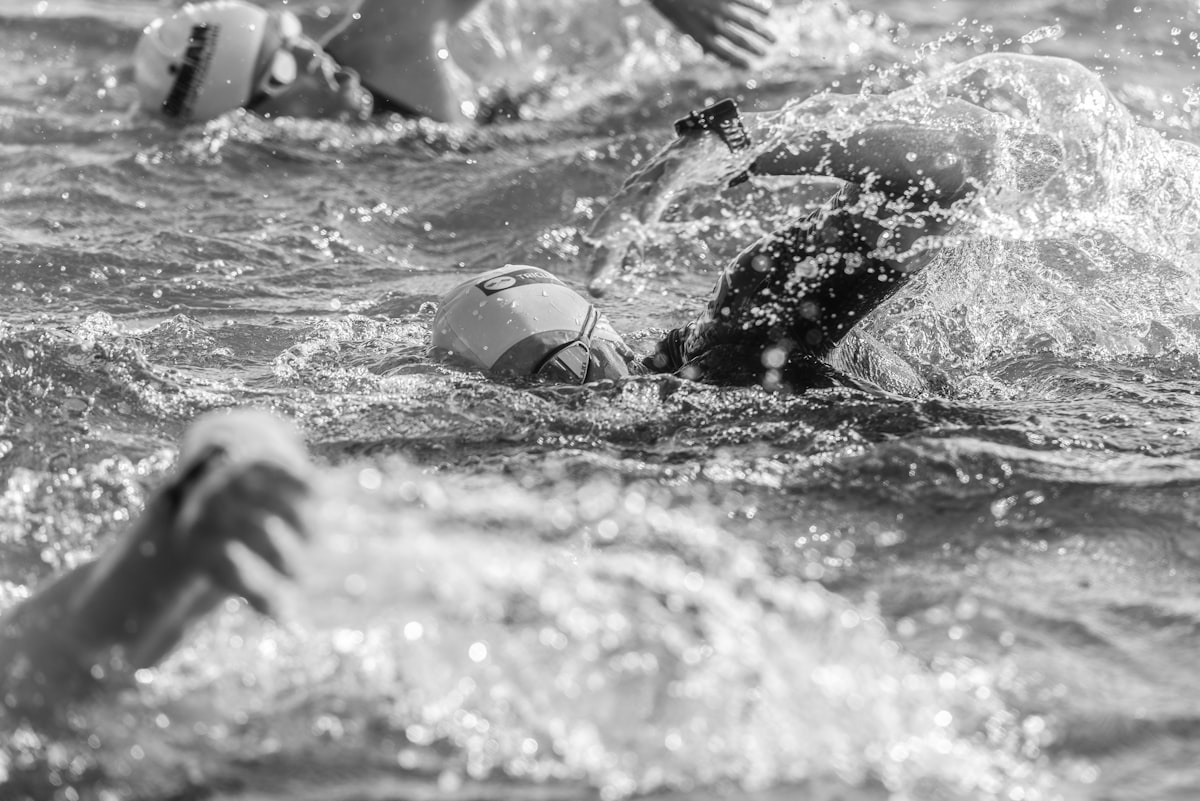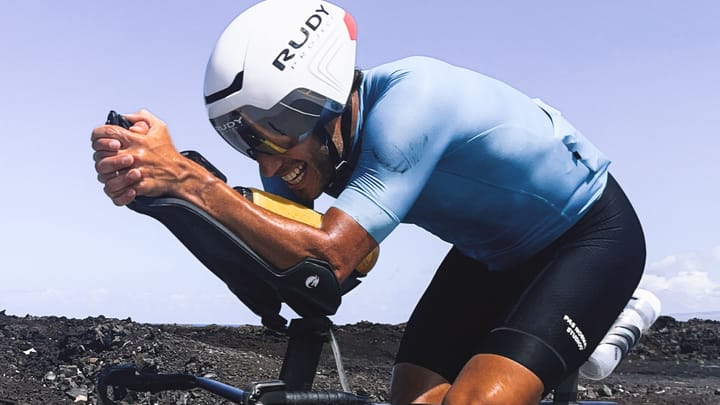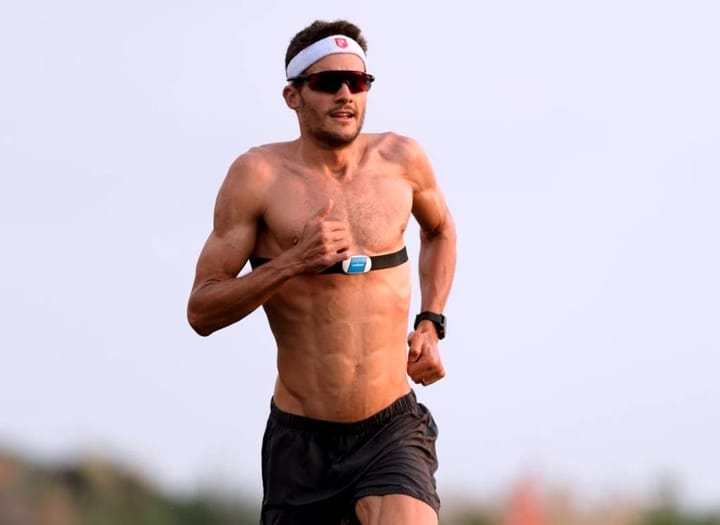The 3 Simple Aspects of Freestyle for Long-Term Improvement
To swim great freestyle, minimise drag by assuming a streamlined body posture with level alignment and lack of wiggling. Keep it simple and practice the Ball Float, Human Paddle, and Over-Under Freestyle exercises.

Freestyle can seem really complicated, with so many details that it can be overwhelming. When trying to decide what to work on, it can be really challenging to know where to start. To address this issue, and simply the learning process for you, I’m going to describe the 3 simple aspects of freestyle that are critical for long-term improvement. If you can improve in these three areas, you’re guaranteed to improve your freestyle.
Position: Minimize drag through great alignment by assuming a streamlined body posture.
- Horizontal alignment: keep your whole body level at the surface of the water
- Lateral alignment: avoid 'wiggling' through the water, move straight
- Improved breathing to avoid disrupting alignment
Pulling: move as much water backward as possible
- Get hand deeper than elbow, closer to midline of the body
- Pull straight back while minimizing side to side deviations
Piston: rotation allows optimal arm recovery and arm pull
- Enough rotation to recover arms smoothly without disrupting alignment
- Rotation allows for longer arm pull using strong muscles
Position
What’s the most important component of great freestyle? Minimizing drag through great alignment by assuming a streamlined body posture. You want to move through the water with as much horizontal and lateral alignment as possible. Doing so is the key to speed.
Optimal horizontal alignment occurs when your whole body is level at the surface of the water, and it doesn’t take much work to maintain that position. As the hips tend to sink, achieving this position requires learning how press your chest and head into the water so that your hips and feet stay level at the surface. If the hips or feet are dragging, it’s going to kills speed. You need to keep them up.
Great lateral alignment is characterized by a lack of ‘wiggling’ through the water, where the hips and shoulders are moving side to side. Everything needs to be moving straight. Wiggling is often caused by really low and wide arm recoveries that keep throwing everything out of alignment. Recovering the arms over the top with the aid of sufficient rotation (see below) can often clean these issues up.
Even if someone has both of these skills down well, alignment is often disrupted by poor breathing. Every time a breath is taken, there’s a real danger that the head is going to be pulled up and to the side. Unfortunately, you need to breathe, so this is a skill that needs to be learned well. Hiding the breath is key!
My favorite exercise for improving position is the Ball Float. It works to help establish a sense of stability and control in the water. It’s a skill that anyone can learn.
Pulling
Many descriptions of an effective arm pull are very complicated. However, the goal of a great arm pull is simple- move as much water backward as possible, so that you can move as forwards as possible with each stroke. To move as much water backward as possible, each stroke should use a large surface area (the hand and forearm), create a lot of pressure (pull hard!), and maintain both for a large range of motion. Simple!
Now, how do you do that? Rather than focusing on arm angles and hands pitches, keep it simple. To create the right position to pull with, get your hand deeper than your elbow and get your hand closer to the midline of your body than your elbow. Think of your arm as a hook, with the hand deep and the elbow wide to the side. This will create the correct position that will allow you to create a large pulling surface and use the strongest muscles of your upper body. Then just pull straight back while minimizing side to side deviations.
Following these key concepts will help you demystify one of the most overcomplicated topics in swimming, and help you get more out of each and every arm pull. A great way to learn this skill is to perform the exercise Human Paddle. It’s a great way to work on these concepts.
Piston
Rotation, or creating a great piston effect, is the final key element, and in some ways is the most important one. The role of rotation is misunderstood. Rotation itself isn’t critical. It’s what rotation allows you to do that matters. The real role of rotation is to make up for a lack of flexibility in the shoulders. My rotating, it allows you to move your arms through ranges of motions that you’d otherwise be unable to achieve.
To recover the arms over the water, the entire arm needs to move behind your body. If you don’t rotate sufficiently, it becomes very difficult to smoothly recover your arms over the surface without disrupting your body alignment. As we saw earlier, disrupting your body alignment is the kiss of death for speed. Just as importantly, rotation puts your arms in a better position to pull for longer periods of time, while using the strong muscles of the body.
It’s important to note that more is not better. It’s an issue of rotating ‘enough’. Too much rotation doesn’t provide you with any extra efficiency, but it will slow down your stroke rate. How do you know what enough is? If you can recover your arms smoothly and easily, without disrupting your alignment, and if you can pull straight back without any undue stress, you’re rotating sufficiently.
The bottom line is that effective rotation allows you to execute the two previous skills optimally. Rotation allows you to recover the arms without disrupting the body line, and it allows you to extend the duration of the arm pull. Two very good reasons to make sure you’re rotating well to both sides.
To work on ensuring that you are executing your rotation effectively, give Over-Under Freestyle a try. It forces you to rotate, and it forces you to rotate in concert with the arm pull.
Simplified Freestyle
Effective freestyle is often made out to be extremely complicated. However, it’s not the case. To swim great freestyle, you need to get really good at a couple key skills. When you move through the water, you need to ensure that you are moving straight through the water, with as little horizontal and lateral movement as possible. When you take your arm pulls, you need to focus on creating a nice hook on the water and pulling straight back. Rotation makes both of these tasks more effective. Keep it simple and watch yourself improve.





Comments ()